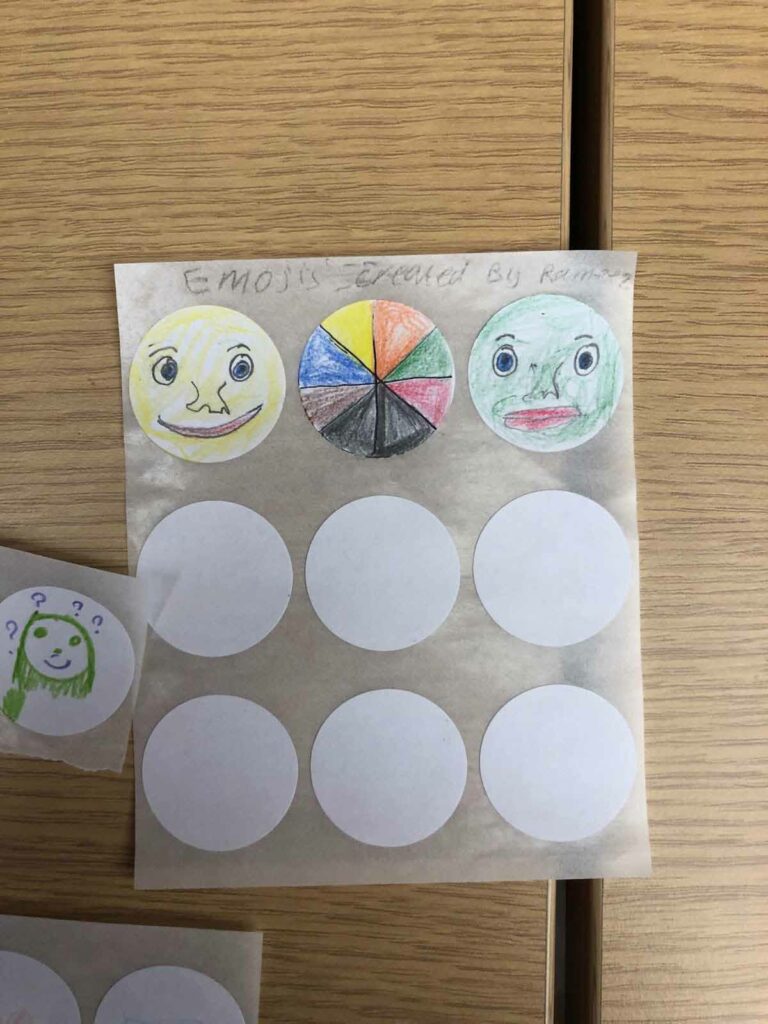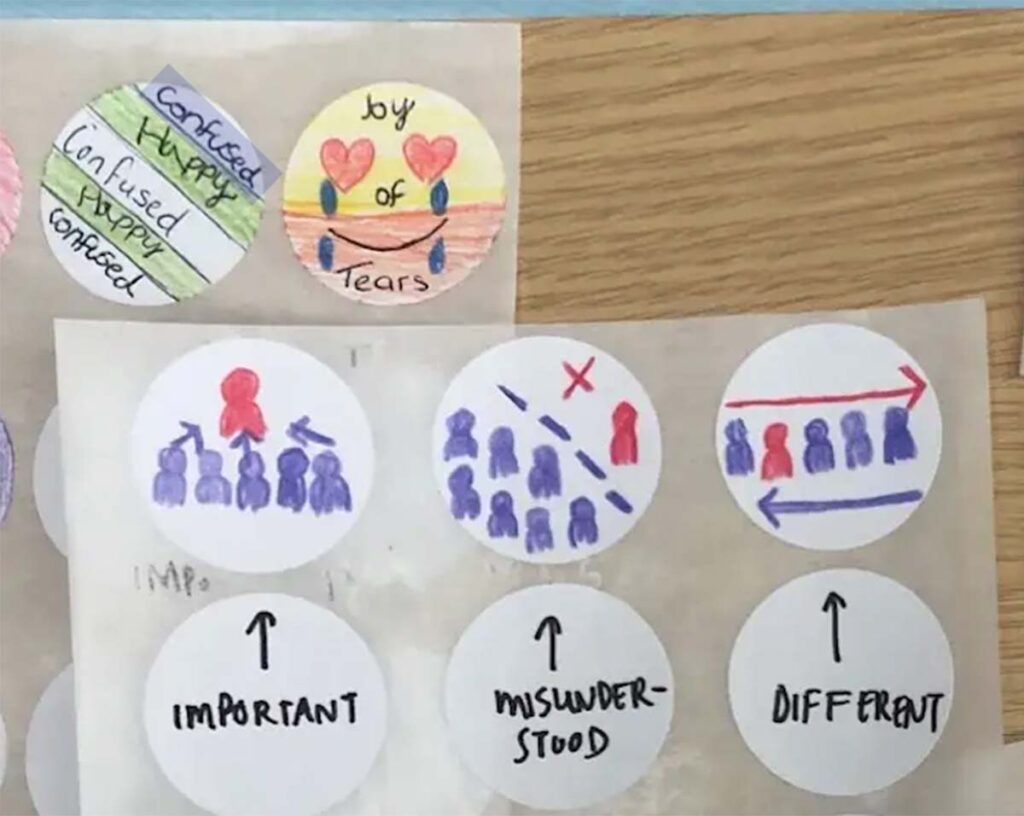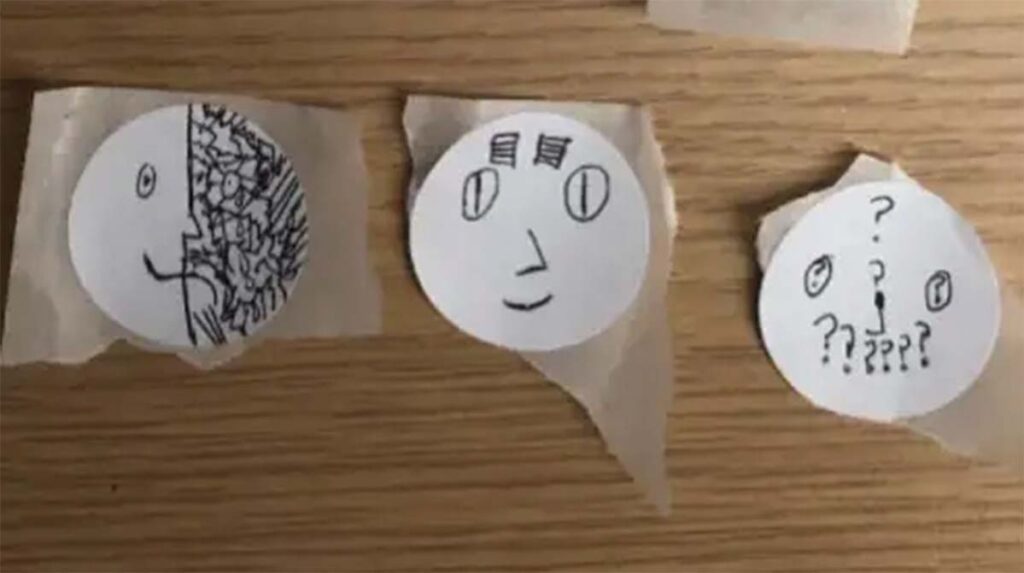I want to share an activity I created as a first step in a co-design process with a group of young people with additional support needs that was used to build bridge between our two worlds. So that over the coming year we could accessibly co-create with an understanding of the young peoples experience and create shared language.
A Bit of Background
The transitioning experience from childhood into adulthood can be traumatic for many young people with additional support needs. Their voices and dreams are unheard, their needs and struggles not sufficiently supported, and in some cases, young people may not be invited to the very meetings where their futures are decided.
While I was working at my company, Passio, I had the pleasure to work with the Divergent influencers, a group of young people aged 16–25 who were picked by ARC Scotland to represent the voices of people like them across the country. My task was to work together with this group to co-produce a tool that supports and educates young people across Scotland while also preparing them to be able to confidently advocate for their future.
In order to deliver this, it was crucial to create an inclusive design process to enable us to be on the same page of understanding the experiences of young people at school.
Design Challenges
If you work in the design and accessibility field, you may have heard about the double empathy problem. The basic idea of the double empathy problem is that neurotypical people can understand and communicate with each other well and neurodivergent groups can also communicate within their own groups perfectly fine. The problem arises when neurotypical and neurodivergent people have to communicate with each other because there is often a gap in their perspectives which makes exchanging ideas difficult.
Knowing this, our first challenge was to design a workshop activity that bridge our worlds to build a vocabulary to establish a mutual understanding between everyone involved. This way, we could work together while combining our expertise in order to co-design a successful solution.
Coming from a cognitive science perspective, I initially contemplated using emojis in feeling charts to help us understand the affect young person’s journey through school. These kinds of activities should be familiar, intuitive and accessible.
However, I knew from experience neurodivergent groups reported these activities were not inclusive to them. Interpretations of emojis in feeling charts are subjective and created based on neurotypical standards. Neurodivergent people’s experiences won’t always fit into the same boxes.
Here is an example to illustrate this point:

Is this Emoji anger? Sad? Constipated? Different people can interpret this information in many different ways.
If we look at typical feeling charts, they do not encapsulate other affective states such as ‘ sensory overloads ‘, which is a highly relevant feeling many Neurodivergent people experience. Thus, if a person in your user research group cannot find an emoji or the language to represent how they feel, they are forced to find an approximation that may not be accurate to how they feel at all. In design research and co-creation, it means losing valuable insight, data and connection to people’s true experience.
Finding a New Approach
Dr Dinah Murray, brilliant autism and disability advocate, introduced me to ‘autimojis’. These were emojis created by autistic people to showcase their own emotional affect states. Here are a few examples. Notice how they do not have facial expressions?


Inclusive Design Process
We built a bespoke user research method upon the idea that typical emotional scales would not fully encapsulate neurodivergent experiences. Thus we created a new activity. Instead of feeling charts we asked young people to create three emojis to represent their experiences at school using these automojis as creative prompts.
The Results
The Divergent Influencers were highly engaged and very creative. Here, a young person drew an emoji of Shrek. He explained he felt like an Ogre at school — people misunderstood him when he was a really soft and kind person.

Below you can see the Conflicting emoji with a person feeling happy and confused simultaneously and both joyful and tearful simultaneously.

Here a person described feeling fragmented. I could never have imagined feeling like this without this imagery!

“I never knew how my child felt because she was unable to articulate her experience. If I had something like this, it would have made such a difference to her life.”
A Divergent Influencer’s parent
Conclusions
Involving young people in an inclusive design process where they created their own emojis instead of having them select them from pre-defined feeling charts proved to be an effective approach to building bridges and overcoming the barriers posed by the double empathy problem.
I was able to see a new perspective on how school was different for many young neurodivergent people and I gained insights into things I would have never otherwise imagined. Not only that, but this approach provided a platform for some interesting, deeper group discussions and I got a chance to gain an understanding of young people’s colourful experiences at school.
The feedback from the Divergent Influencers was also that they loved the the activity and were impressed it was so highly inclusive and accessible, allowed them to express their opinions in ways that are not possible through language but easier through drawing.
As people working in user experience, it is our job to capture participants’ true feelings towards products or ideas, and this is not possible without accurately mapping how our users might really be feeling.
So next time you’re tasked with assessing feedback on something, have a think about whether the tools you’re about to use are really suited to work with the people in your research group. You might find an artistic approach or even the use of sound might be more effective than language as a means of expression.
Enjoy my articles?
Consider following me on medium or twitter
Or sign-up to the medium membership program for 5$. It supports my writing and thousands of other medium writers plus I’ll make sure you’re the first to hear about content before it get’s released so you can give comments and feedback!


